Will I Ever Get Better At Playing The Banjo?
“Will I ever get better?” is the perennial cry of the banjo pre-beginner (folks say there is no such thing as a pre-beginner but I have been one for 10 years…) or beginner banjo player. We always feel just a tad bit “lacking” in improvement despite all of our best efforts. The truth is that we have more than likely made more progress than we know.
A LOOK BACK:
I have been playing banjo for over 10 years. I tell folks that I SOUND like I have been a banjo player for “at least 10 minutes” which always gets a chuckle. The truth is somewhere in between.
The other day I pulled out some of my old song sheets. I was watching the “Muppet Movie” and was inspired to try my old arrangement of “The Rainbow Connection”. It actually has what NOW seem modest chord forms: Em, Bm, Bmajor, C, D7, and of course open G. Back when I first learned it I complained to my teacher about the Em and Bm; “Why are you so mean? Why do I have to do those chords? Can’t you make it easier?”
Today it is a different story. I can easily make those chords and the song is so much fun to play. I had no idea, 8 years ago, that it would EVER happen this way. And when I was first shown a C chord, I moaned for weeks. I can close my eyes and make a good C chord today but I NEVER thought the day would come those many years ago.
IN THE HERE AND NOW:
Sharing these stories is just a way of telling you that YES, you WILL get better!
So how do you measure this “unknown” progress?
- For those of you who have been playing a few months or more and are despairing, go back and pull out some of your first songs and play them. Easier than the first time? They should be…only we tend to forget how hard they seemed when we first learned them. You can borrow my old friend, “The Rainbow Connection”, if you can’t find any of your own favorites.
- Do you have a friend that you play with? Did you ever think you would be playing with anyone or in front of people? I never did.
The first time I had to play in front of a group it was at an elementary school. The school called the factory to see if someone would come out and read to the children during “literacy” week. I volunteered…heck, I at least knew how to read.
We set the date. The “week of” they call back to remind me and said, “Oh, and don’t forget your banjo so you can play for the kids.” WHAT? Who said anything about playing? So, I started practicing a couple of simple tunes but quite frankly, I was terrified at the thought of actually playing in front of anyone. I asked for the 1st graders, figuring they wouldn’t notice if I goofed up. I read them the book about the Yak who overcame his fears and we had a good time with that. Hey, I told you I could read. Then it came time to play. I thought it best to be honest with the children so I told them I was afraid because I had never played in front of anyone. I mustered up “Twinkle-Twinkle Little Star” while they sang and we also sang “Happy Birthday” to the child whose birthday was closest to that day. OK…I did miss a few notes but they didn’t notice my fumble or were too polite to say so. They all clapped and one sweet child looked up at me from her seat on the floor and said “You played really good.” God Bless Her! Since that day, I have taught others to strum banjo, played at our factory open house during the holidays and actually did a program or two at our local libraries. If you had told me I would do THAT 10 years ago, I would have questioned your sanity!
- If you have a metronome, this is a marvelous tool to help you understand how far you have come. Start out at the slowest speed and do a series of banjo rolls. The fact that you KNOW your banjo rolls is also an indicator of your progress. Now bump up the speed just a little and continue with your roll patterns. As you continue this slow upward progression, you will eventually hit a point at which your roll pattern playing begins to lose integrity. In other words, playing at that faster speed is not clean, clear, and crisp. Stop there and review how FAR from the slowest speed you have gone. That’s progress.
- Can you read tablature? That is something we tend to forget we didn’t know how to do until we took up playing the banjo.
- Can you play by just listening to a tune? That is a skill you have developed.
- How many songs do you know? Remember, you didn’t know even ONE when you first started.
- Can you sing and play at the same time? That is not an easy thing to do in the beginning. Your hands have to know where to go while your mouth is moving. I know that sounds silly but the first time I tried to sing a new song and play; I realized how hard it was. Until you have the muscle memory in your hands, your singing is distracting! Those of you who play should understand what I mean.
YOUR VERY FIRST TIME:
If you have never played a banjo or any other acoustic stringed instrument, then now is a great time to start charting your progress.
What do you need to make this happen?
- Start with a good banjo. A Goodtime banjo is built to help you be successful. This is important…an instrument with the scale cut correctly sounds musical. An instrument that is comfortable to play with will encourage you to come back for more playing time.
- Get the Deering Two-finger DVD. You will be strumming and singing along in about 10 minutes or less. I have taught this simple strumming method developed by our sales manager here at Deering to countless individuals at festivals. I love the smiles on their faces when they find out it is easier to make music than they could ever imagine!
- Get a basic banjo book and learn about the parts of the banjo.
- Learn basic roll patterns.
- Practice slowly…using a metronome to keep the pace steady and slow.
- Record yourself daily or weekly…and you will soon begin to see how your playing speed improves. Notice that your “natural speed” on the metronome has bumped up slowly over time…a true measure of your progress.
- Practice…I know I said this before but it is the key to true growth.
- Find a basic tune you like. Practice your rolls first and then move on to the song.
- Sing while you play.
Before long, you will have stories of your own progress to share with others.
That’s the real sign of growth. When you can look back at the “new you” and the “now you” with a smile and a laugh, you will know the real joy of music!
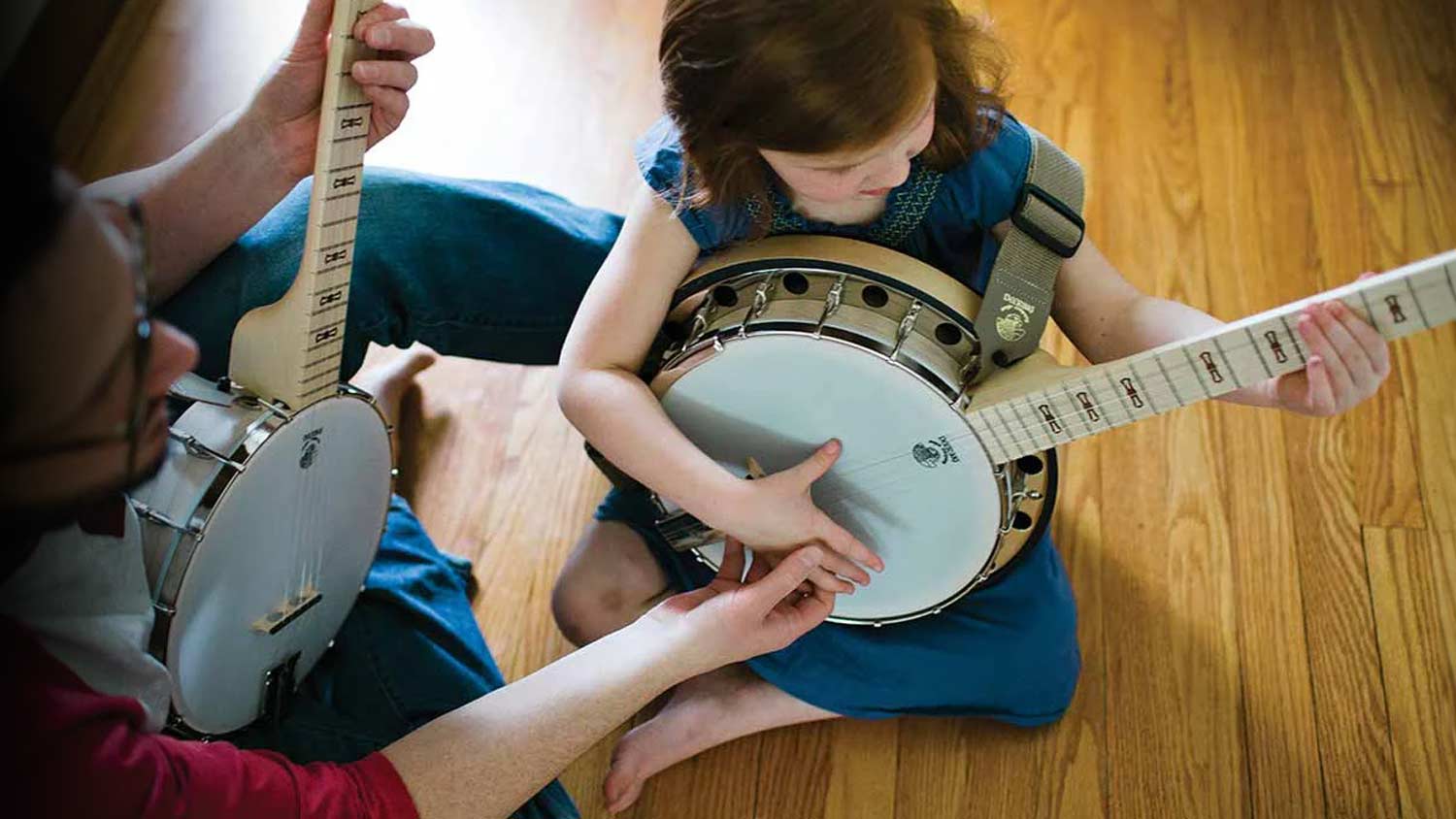



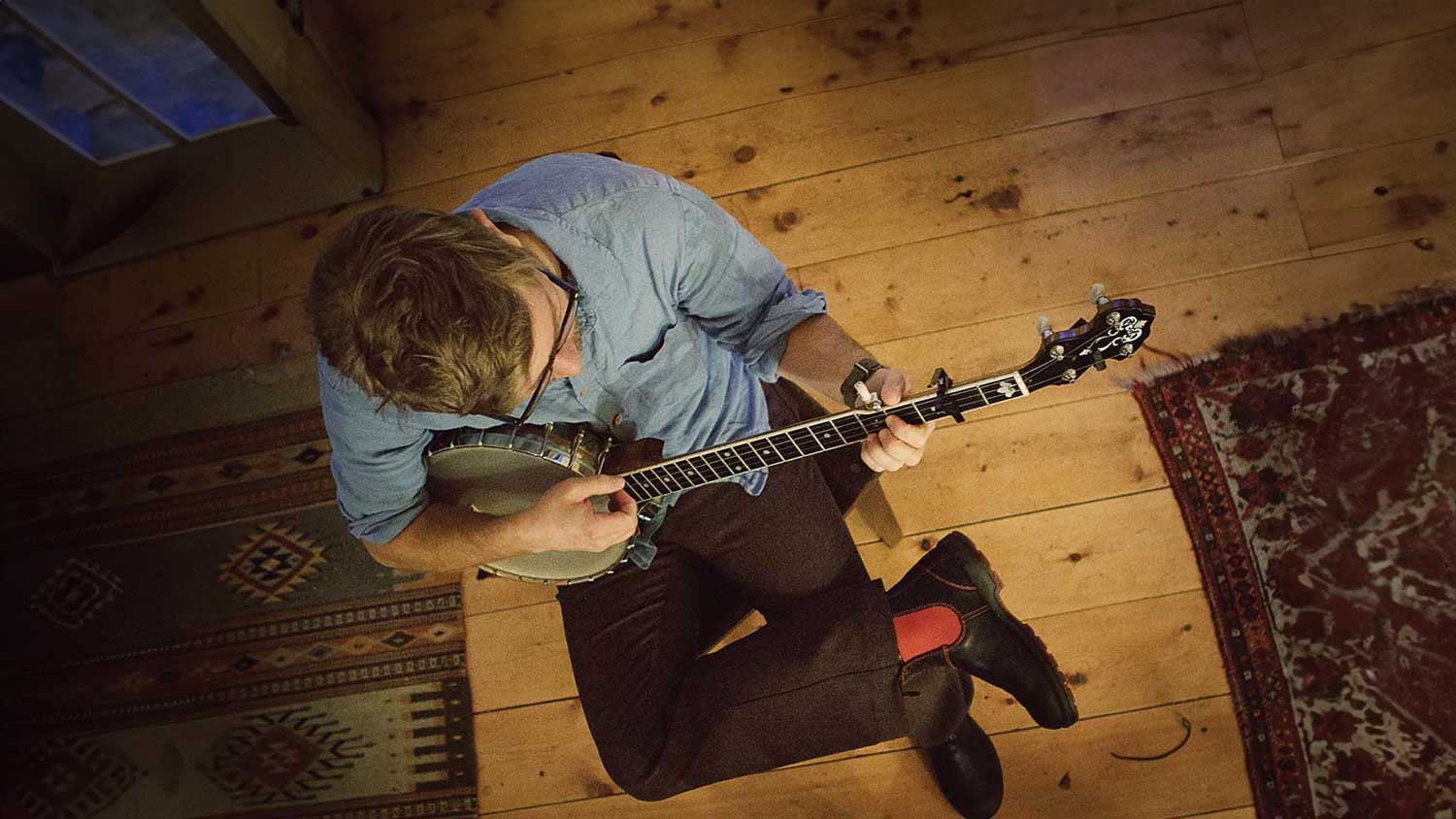
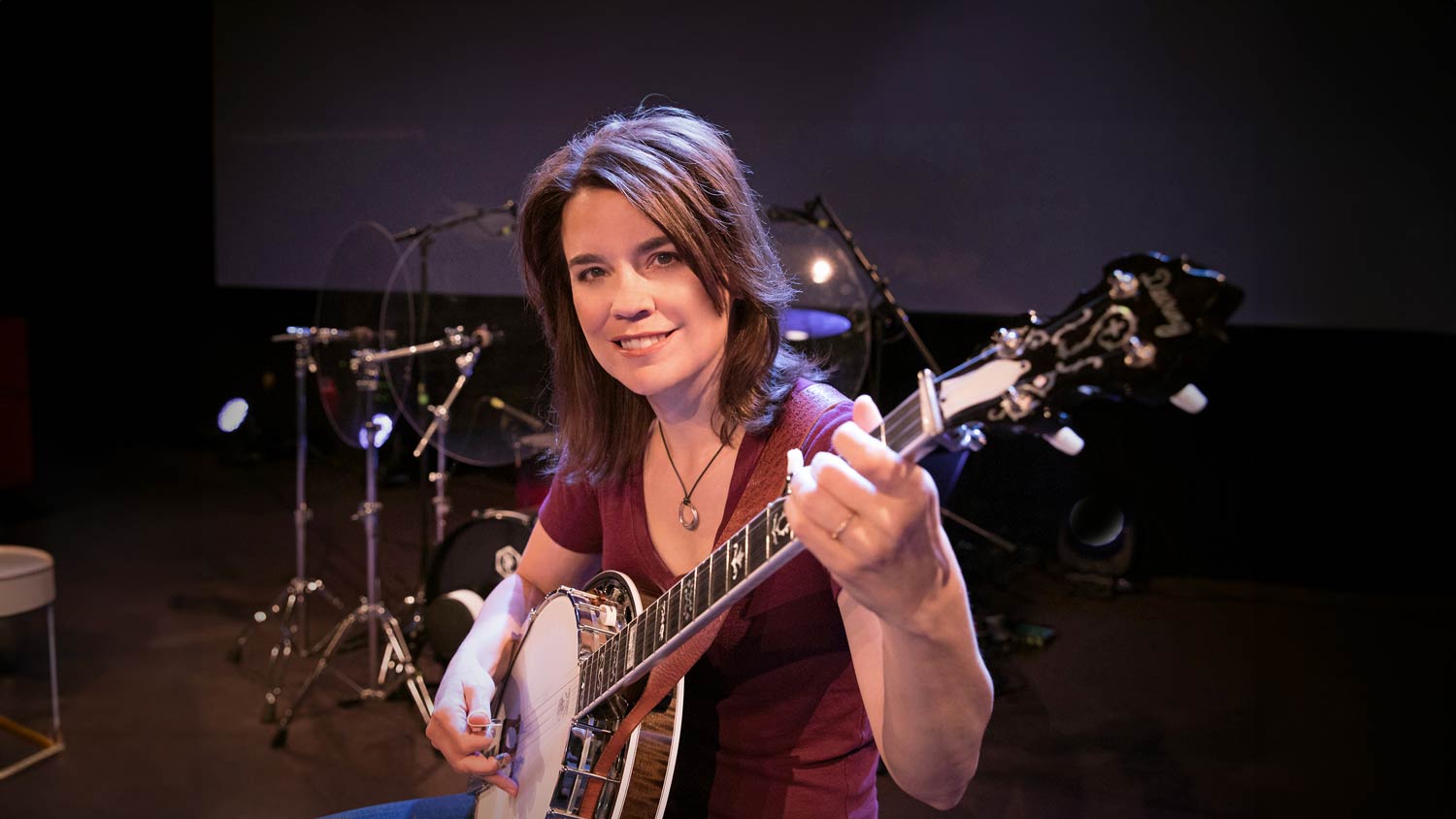

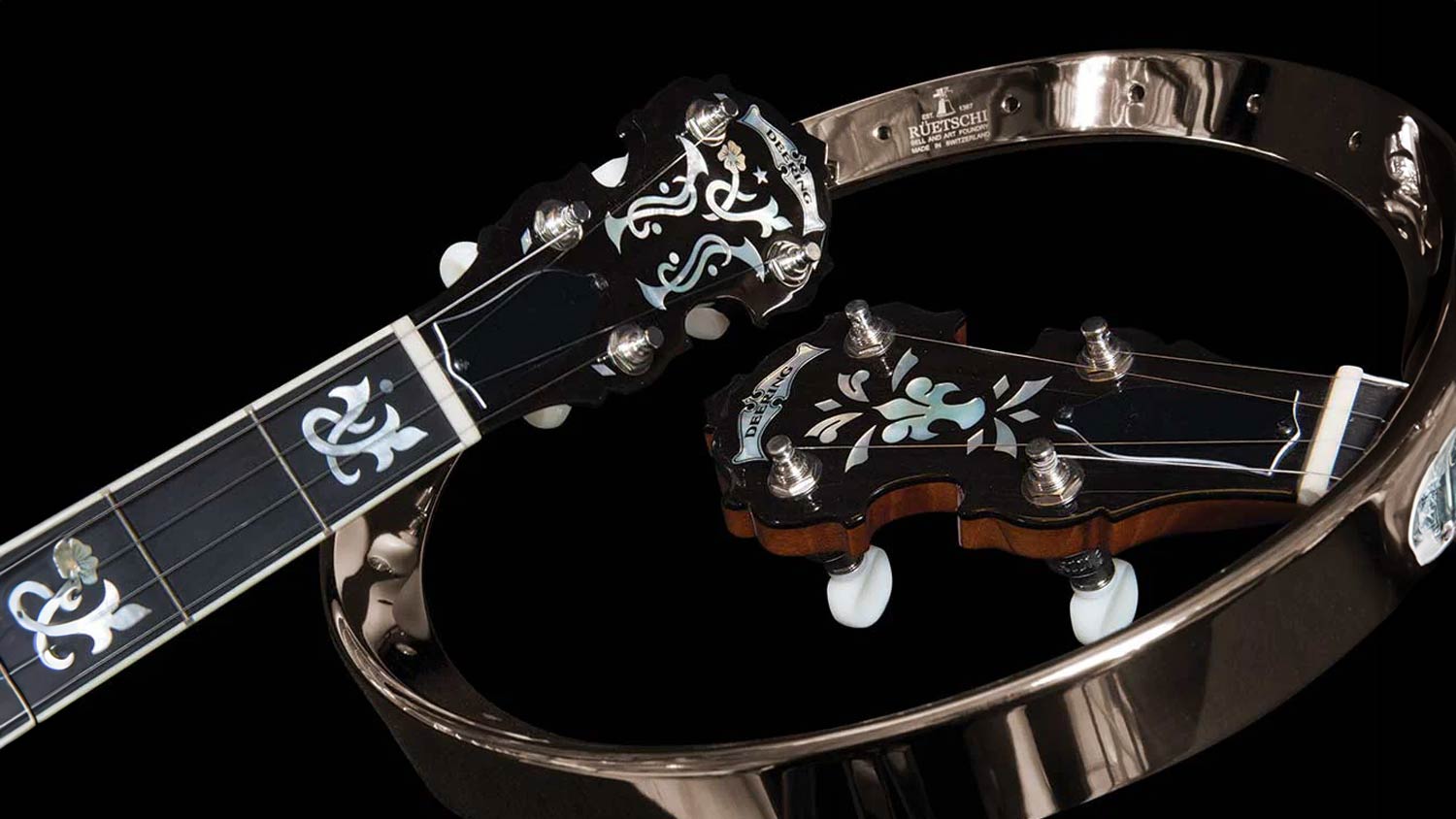

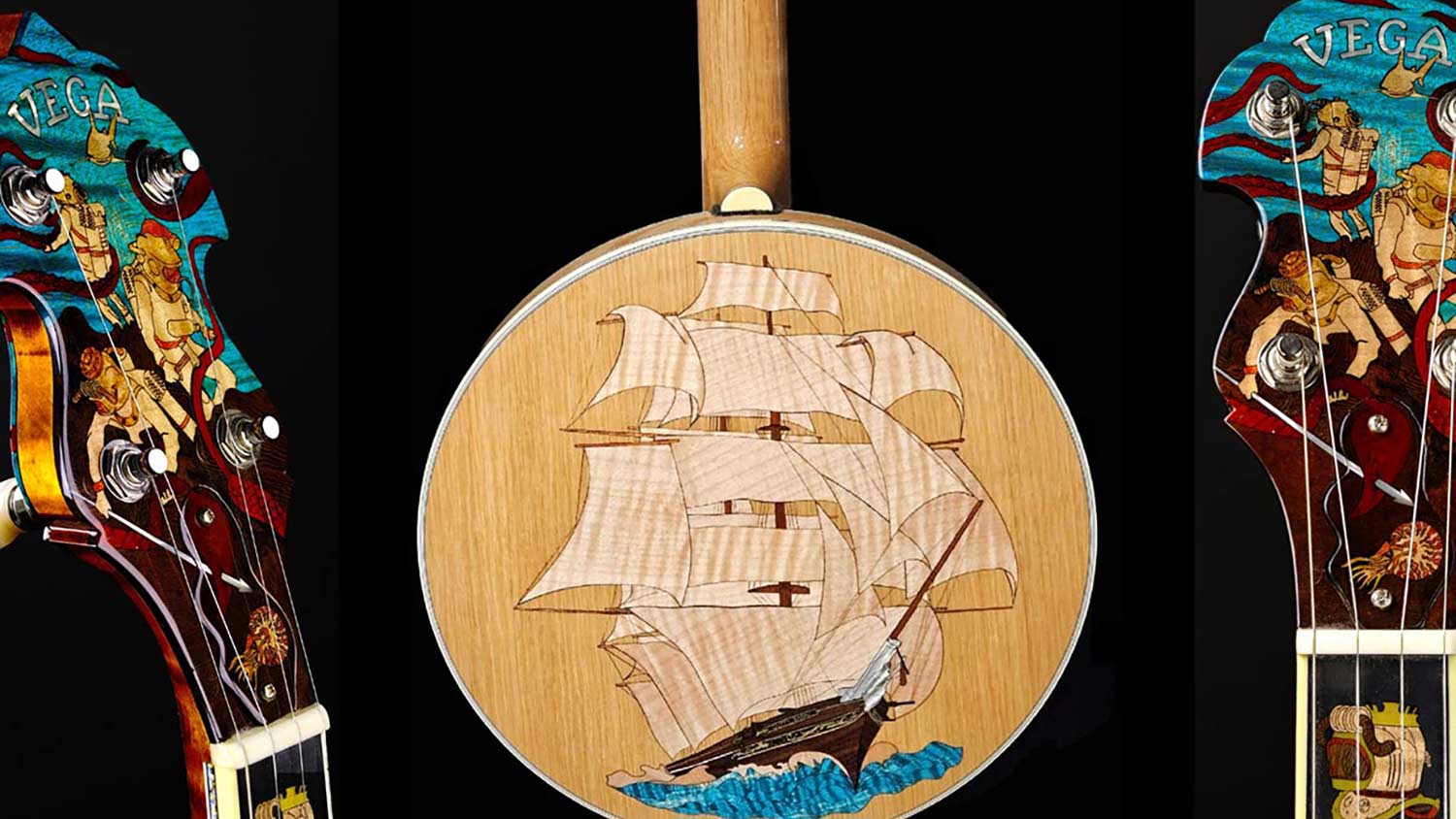





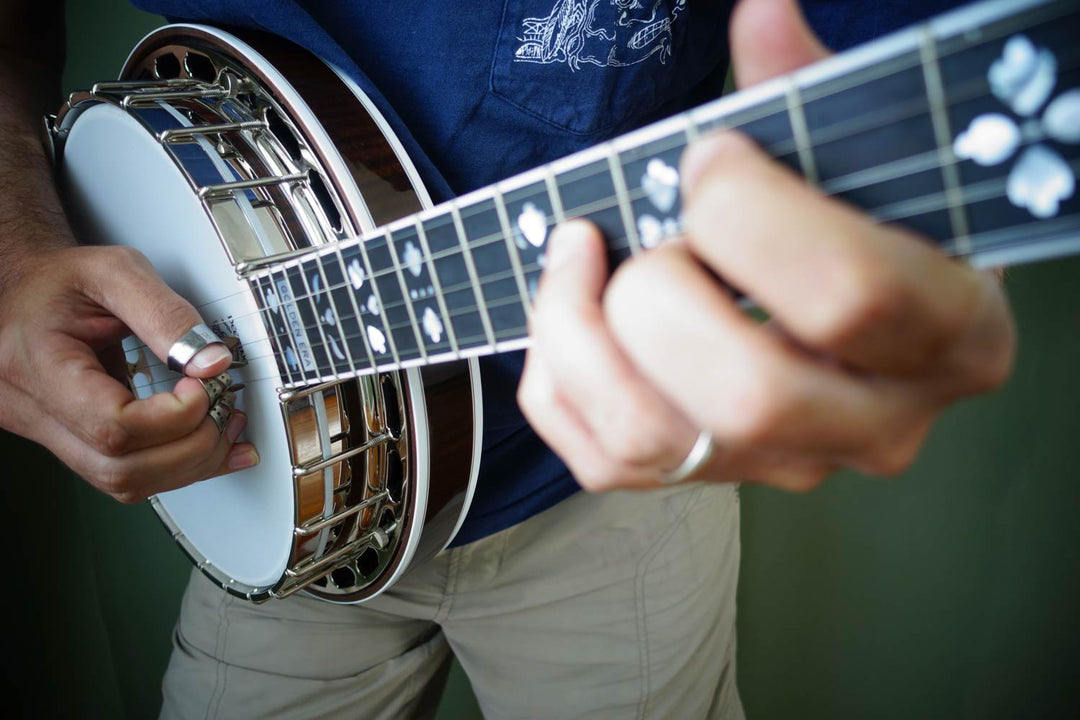
Thanks for the posting. If’s good to see others are in my position as a “Pre beginner player” I was given a banjo by one of my nephews to pull me out of a big black hole after my wife died. I haven’t played with anybody else as my requests for a local beginner to join me have proved fruitless. Nevertheless I have learned Cripple Creek and Bile them cabbages and am now onto the complexities of forward, backward and sideways rolls. Because I need to keep in good with my neighbours (I live in a small terraced house in Chorley Lancashire England) who are magnificent folk, I now go daily to my local supermarket. Find a spot in the farthest corner of the car park and practice my very noisy chords, rolls, strums and anything that takes my fancy without incurring the wrath of any delicate ears. I’m still a pre beginner but it’s surprising how my daily banjo bashing eases my mind and with Gods grace and my sore fingers I will improve. I listen to the proper players and hope that I will soon be able to be at least a little as accomplished as them.
Hi Mark,
Yes, I understand both issues. Regarding #2, yes, just keep on going and the start over again. But, go very slowly…I mean really, really slow when you are learning a new song. We do make mistakes…I do all the time…but with repeated playing you do eventually get the movements right and the speed comes naturally. As to number 1, try not playing with the metronome for a bit. Focus on getting to each position in the song at a very slow pace on your own. Once you get the muscle memory for the movements themselves, the put the metronome back on at the slowest speed. You should find it easier to keep up once you have that muscle memory of the song better in place.
You are right on all counts…constant practice will remedy this but also PATIENCE with yourself in good doses will keep you happy. :-)
hi carolina
am having trouble on two fronts that i know loads of practice will put right but its how to organise it i am struggling with 1)how to fret on time nb i realise it will come with time but have metronome as low as it can go and still cant do it 2is keeping going when you make mistakes ,as soon as i make a mistake i stop and go back to beginning i have been told to learn to carry on so advice re this would be appreciated as i have stated am not after a quick fix a constructive way of practicing thats all and the last thing i want is the banjo to be my enemy kind regards
Thank you for writing, Chris. I enjoyed reading all about your love of banjo. You are quite a versatile player! That’s great. And you are right about leaving them out…they are easier to pick up and play that way.
I appreciate your compliments and thanks for reading the articles. :-)
Nice article! I bought my first banjo from Sears when I was 12, still have it and it plays well (I did put 5-star tuners, a bronze tone ring and no-knot tail piece on it ). I was also entrusted with a family heirloom from my wife’s great uncle, a pew-war Vegaphone long neck plectrum and have been learning the plectrum style for the past few years. As my banjo family grows (I have a MaBell Tenor from the 20’s and a modern open-back) I play every day and find it is a kind of meditation for me, forget the current life issues and simply immerse myself in the techniques and timings of playing. I enjoy the challenge of switching between tenor, plectrum, claw-hammer, strumming and blue grass. Each technique although different reinforces the skills needed for the others.. Keeping the banjos out on a rack and readily accessible is the key for me. Again thanks for your article.
Leave a comment